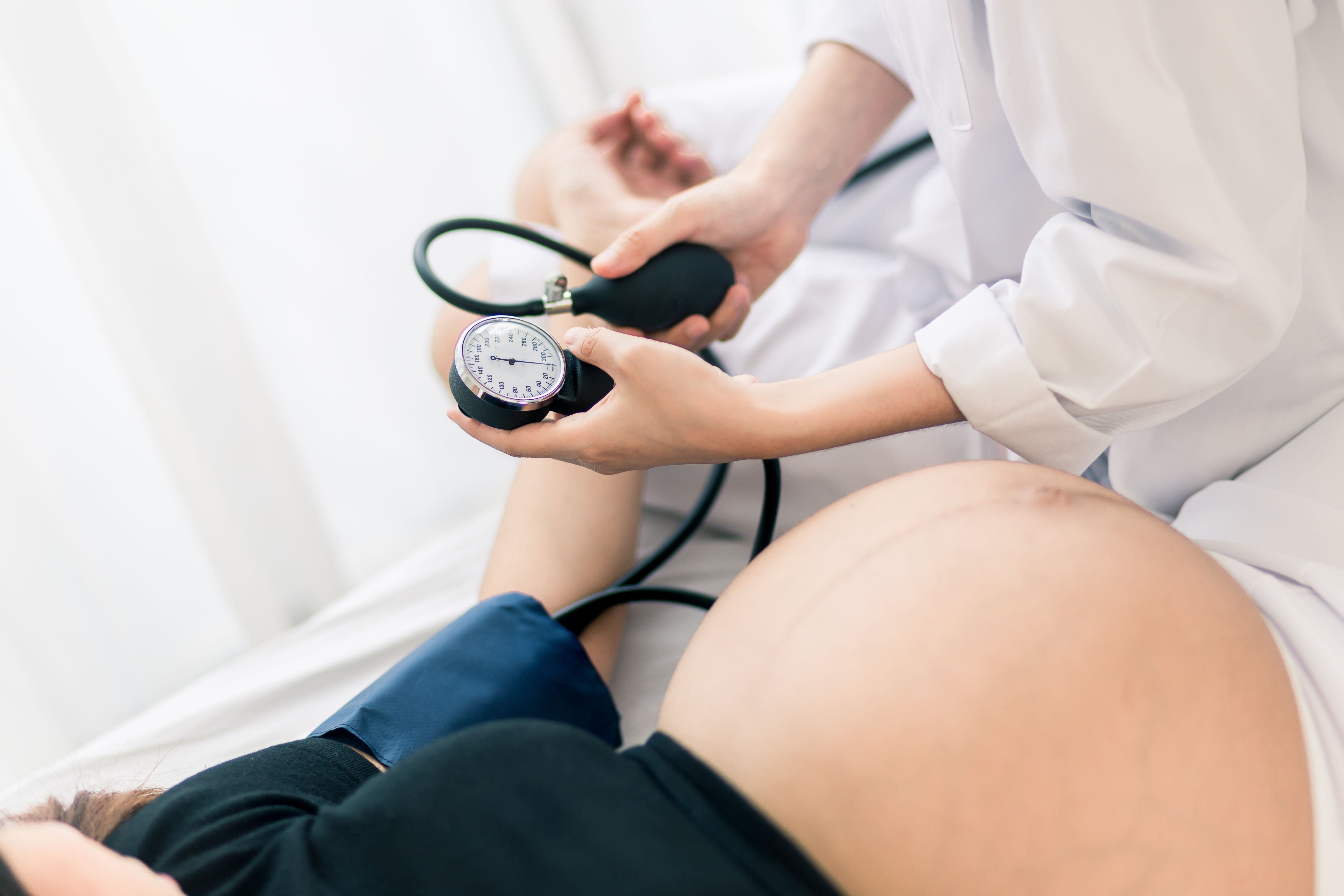Preeclampsia (PE) onset can be predicted by maternal vascular indices at 36 weeks’ gestation, according to a recent study published in the American Journal of Obstetrics & Gynecology.
Takeaways
- Maternal vascular markers at 36 weeks' gestation provide valuable predictive insights into preeclampsia onset.
- Preeclampsia affects approximately 5% of pregnancies and is a leading cause of maternal and perinatal complications.
- Women who develop preeclampsia show increased arterial stiffness and central blood pressure at 35 to 37 weeks' gestation.
- Screening using maternal risk factors combined with mean arterial pressure shows improved detection rates for preeclampsia.
- Combining maternal risk factors with specific biomarkers yields high prediction rates for preeclampsia, offering potential for early intervention and management.
Approximately 5% of pregnancies are impacted by preeclampsia, making it the leading cause of maternal and perinatal morbidities and mortalities. Of PE cases, 75% to 80% develop at term, and these have an equal number of adverse events when compared to cases that develop preterm.
Risks increased by PE include hypertension by 4-fold and adverse cardiovascular events within a decade by 2-fold. These associations indicate potentially accelerated vascular aging in women with PE, but data about vascular abnormalities and PE is lacking.
To evaluate vascular indices at 35 to 37 weeks’ gestation among pregnant women with PE, investigators conducted a prospective observational study. Participants included women visiting King’s College Hospital, London, United Kingdom, at 35 weeks to 36 weeks and 6 days’ gestation of a singleton pregnancy delivering a nonmalformed live-born or stillborn neonate.
Patient characteristics included ethnicity, weight, height, age, conception method, and history of chronic hypertension, diabetes mellitus, systemic lupus erythematosus, or antiphospholipid syndrome. Family PE and obstetrical history were also assessed.
At the visit, data on maternal demographic characteristics, medical history, maternal vascular indices, and hemodynamic parameters for stroke volume, heart rate, cardiac output, central systolic blood pressure (SBP) and diastolic blood pressure (DBP), total peripheral resistance mean pulse wave velocity (PWV), and augmentation index (AIx) was collected.
Validated automated devices were used to determine mean arterial pressure (MAP), while uterine artery pulsatility index was measured using transabdominal ultrasound. Fetal crown-rump length at 11 to 13 weeks’ gestation or fetal head circumference at 19 to 24 weeks’ gestation was measured to determine gestational age.
Carotid to femoral PWV was measured using the Vicorder device (Vicorder instrument; Skidmore Medical Ltd, Bristol, United Kingdom) to determine aortic stiffness. The brachial artery pulse waveform was also evaluated, allowing calculations of parameters including the central aortic SBP and DBP, stroke volume, total peripheral resistance, and cardiac output.
Delivery with PE within 3 weeks following the assessment was reported as the primary outcome, with PE diagnosis based on the 2019 American College of Obstetricians and Gynecologists criteria. Pregnancy outcome data was also obtained from hospital maternity records or the records of patients’ general medical practitioners.
There were 6746 women with singleton pregnancies included in the final analysis, 2.6% of whom developed subsequent PE. Patients with PE were more often Black or nulliparous, and more often had chronic hypertension, a family history of PE, or PE in a prior pregnancy. These women also had a higher average weight and body mass index.
Significantly increased cardiac output, total peripheral resistance, central SBP and DBP, PWV, stroke volume, and Aix were observed among patients with PE vs those without PE, as well as significantly decreased heart rate. The greatest impact was observed from central SBP and DBP, followed by PWV.
The remaining indices had minimal contributions, making central SBP, central DBP, and PWV the most promising markers. Screening performances were compared by maternal risk factors (MRFs) plus MAP.
PE screening performance was improved when utilizing MRFs plus MAP vs MRFs plus SBP and DBP. The detection rates (DRs) differed by 19.80% and 7.95%, respectively. This indicated MAP as favorable for further investigation vs central SBP and DBP.
A combination of MRFs, MAP, placental growth factor and soluble fms-like tyrosine kinase-1 led to the highest DR of 84.0% for PE within 3 weeks of assessment. The best prediction of PE at any time of assessment was a DR of 67%, achieved from utilizing MRFs in combination with all 5 biomarkers.
These results indicated increased arterial stiffness and central SBP and DBP at 35 to 37 weeks’ gestation among women who develop subsequent PE vs normotensive women. Investigators concluded these factors alongside other biomarkers may be used to predict PE development.
Reference
Mansukhani T, Wright A, Arechvo A, et al. Maternal vascular indices at 36 weeks’ gestation in the prediction of preeclampsia. Am J Obstet Gynecol. 2024;230:448.e1-15. doi:10.1016/j.ajog.2023.09.095

